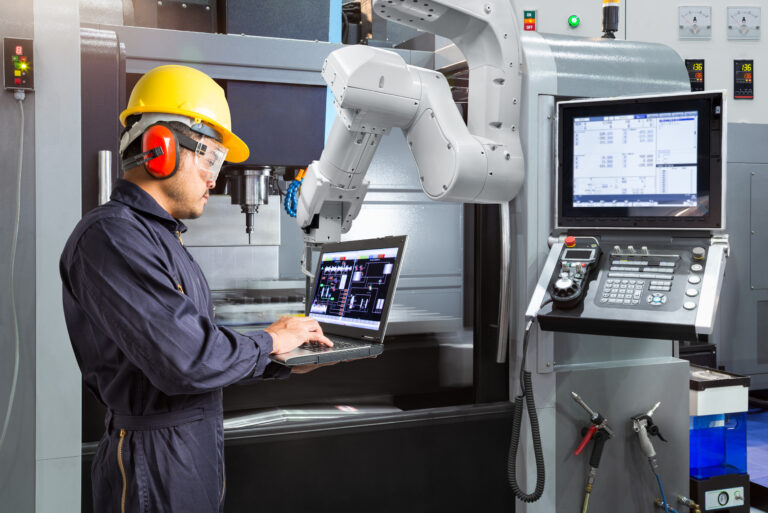There are many reasons to consider integrating automation equipment into your welding manufacturing processes. Whether you’re already engaged in welding operations at your facility or expanding your capabilities to include it, welding is especially well-suited to being automated, often through robotics.

Automation equipment takes many forms from robotic arms of many sizes, to conveyors, to motorized presses and tools. What they have in common is the ability to repeat an assigned task until an operator or engineer makes a change. As a result, machines often work more efficiently and with more consistency than humans, which means they are better at maintaining a desired level of throughput or production. They also require fewer breaks (and these are generally for planned maintenance or adjustments that can be scheduled into the production schedule).
Parts and assemblies manufactured with robots and other automation equipment tend to be very uniform because the machine’s movements are guided by a program, sensors, and logic controllers that restrict the movement, timing, and pressure the tool applies. That means they are less likely to diverge from desired tolerances and specs.
All of these benefits apply to welding applications, in which robotic arms are often the automation tool of choice. Several features of robots pair well with common welding operations, including (but not limited to):
- Articulated arms and multi-axis motion for compound movements, such as moving across the length of a weld seam or rotating around a circular joint
- A range of payload capabilities to accommodate different types and weights of torches
- Onboard “smart” technology to collect data about operations, positioning, and wire or electrode status
- Software to analyze that data in real time and make adjustments to movements or to reorient the torch relative to the workpiece
- Teachability and easy programming, enabling an operator to manually move the robotic arm through a process once and store those precise movements as a program
- Improved operator safety due to their reduced exposure to shielding gases, heat, and sparks, as well as a break from repetitive movements
Types of Welding

A robotic welding machine’s design takes several things into account, notes Robotiq, including selecting appropriate power sources, gas and wire access. work surfaces/tables and fixturing, and enclosure design. And don’t forget worker training – even experienced welders will have a learning curve due to the nature of automated equipment and their new role “managing” the welding workflow and machine operation.
Especially if you’re adding new automated welding capabilities, here are some points to consider about these common types of welding:
MIG Gas Metal Arc Welding (GMAW)
Suitable for large and/or thick parts, MIG welding is often used for bodies and frames of vehicles as well as in shipbuilding and structural steel for building materials. A consumable electrode is used to join parts, resulting in a strong, clean bead that can be applied from most positions.
TIG/Gas Tungsten Arc Welding (GTAW)
Using a tungsten electrode, this method of welding is commonly used for small parts where precision is a priority.
Shielded Metal Arc Welding (SMAW) Stick Welding
Inexpensive, portable, and requiring no additional shielding gas, stick welding works with a flux-coated electrode, which creates its own shielding gas as it melts.
Flux core arc (FCAW) Welding
This method uses a hollow wire filled with flux that creates a shield without requiring additional gas. It has a high deposition rate, making it fast, and is often used with steel, iron alloys, and nickel alloys.
Plasma Arc Welding (PAW)
This method uses very high heat generated by an electrode inside the torch’s copper nozzle, allowing it to create wide welds and keyhole welds, often in a single pass. It is useful for precision applications such as medical devices and electronics.
Electron Beam and Laser Welding
This method is suitable for precision welding, especially for metals of dissimilar thickness, material, conductivity, or melting points.
Gas Welding
Portable and inexpensive, gas welding works with oxygen and acetylene to join thin metals.
Ultrasonic Welding
This low-temperature method joins metal pieces with a solid-state weld. Pieces are held together tightly and welded using ultrasonic acoustic vibrations. It is especially useful for welding dissimilar metals.
Learn More from the Experts at Force Design

One of automation equipment’s greatest strengths is its flexibility. In welding manufacturing, the growing selection of robotic arms, sensors, and “smart” technology can be combined to build a custom system that works with your chosen welding method reliably and efficiently. Not sure where to start? We’re happy to help. Contact our team today to learn more.



